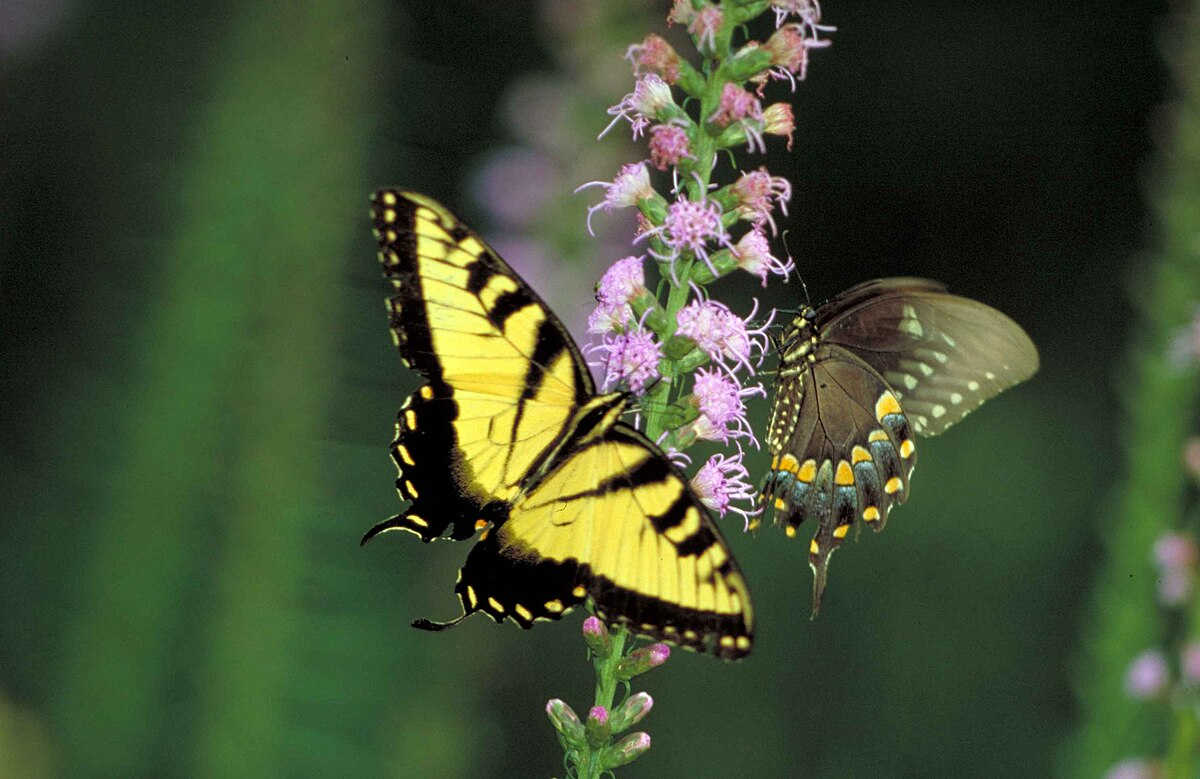There are over 17,500 species of butterflies and moths (lepidoptera) in North America alone, playing crucial roles in pollination and the food chain. However, these beautiful insects are declining by 2% each year due to habitat loss, pesticide use, and climate change. Creating a butterfly and moth-friendly habitat in your yard is an easy way to help support their populations and encourage biodiversity.
By planting the right host plants, you can attract specific species of butterflies and moths, providing them with the necessary resources for breeding and feeding. Simple changes like adding native flowers, shrubs, and trees can make a significant impact. Below is a list of specific lepidoptera species. Learn about each one and how to support them by creating habitats that meet their needs.
With just a few simple changes, your property can become a vibrant haven, flitting with beautiful butterflies!
-

Spicebush Swallowtail
Butterflies
-
-
Recommended Butterfly Rearing Items:
Note: Raise butterflies for educational purposes only as it's best to leave them on the native plant. If you do raise them, please keep them outside.
do not raise them indoors.
RESTCLOUD Insect and Butterfly Habitat Cage
This butterfly tent is sturdy and tall enough for milkweed. It features five mesh panels for airflow with a clear vinyl window for watching caterpillars. It's ideal for monarchs and other butterflies, with a collapsible, reusable design and a large zipper opening for easy releases.

Short Peg Rack with 8 Large Floral Tubes to Feed Caterpillars Host Plant Cuttings
The short peg rack and water tubes are designed for caterpillar safety. The short pegs to prevent unsafe chrysalis formation. These tubes are ideal for holding milkweed and other host plant cuttings, supporting eggs, caterpillars, and nectar flowers for adult butterflies.
These are much better than the grid-style rack holders where the caterpillars can form an unsafe chrysalis.

Recommended Wildlife Restoration Books:
These books below are by Doug Tallamy, a renowned entomologist and ecologist, widely recognized as the leading advocate for promoting native plantings in yards to support biodiversity and wildlife conservation.
How Can I Help? Saving Nature with Your Yard
Douglas W. Tallamy, 2025
Dr. Tallamys newest book is an empowering guide for anyone eager to restore nature at home. With clear, research-backed answers to common conservation questions, Tallamy shows how simple actions can make a real difference. A must-read for backyard conservationists.













